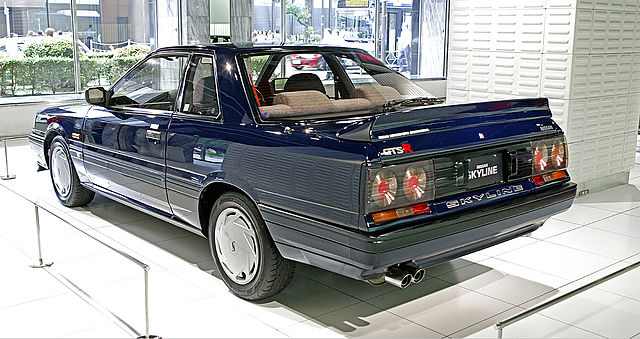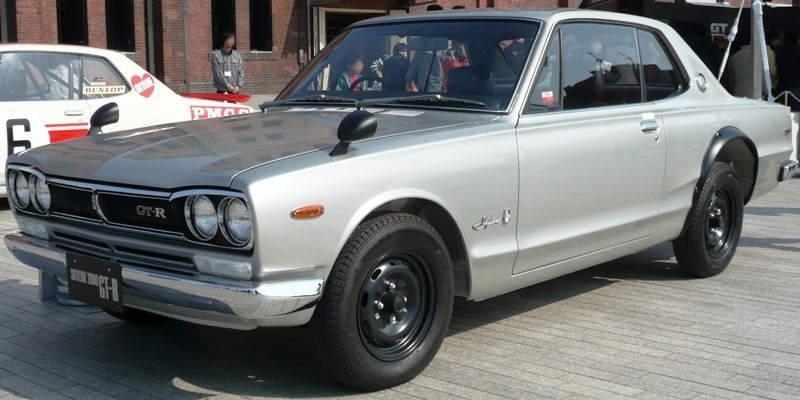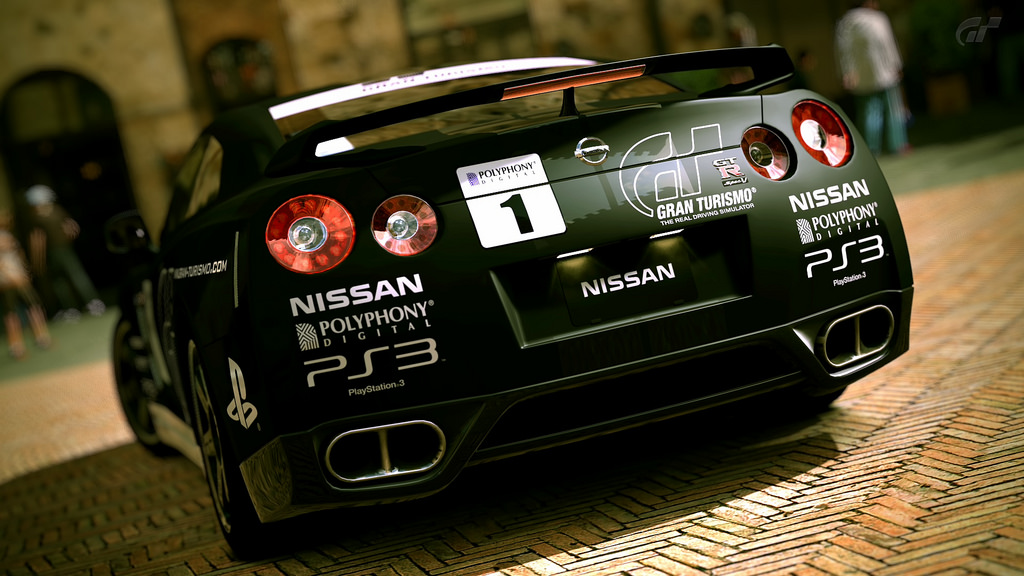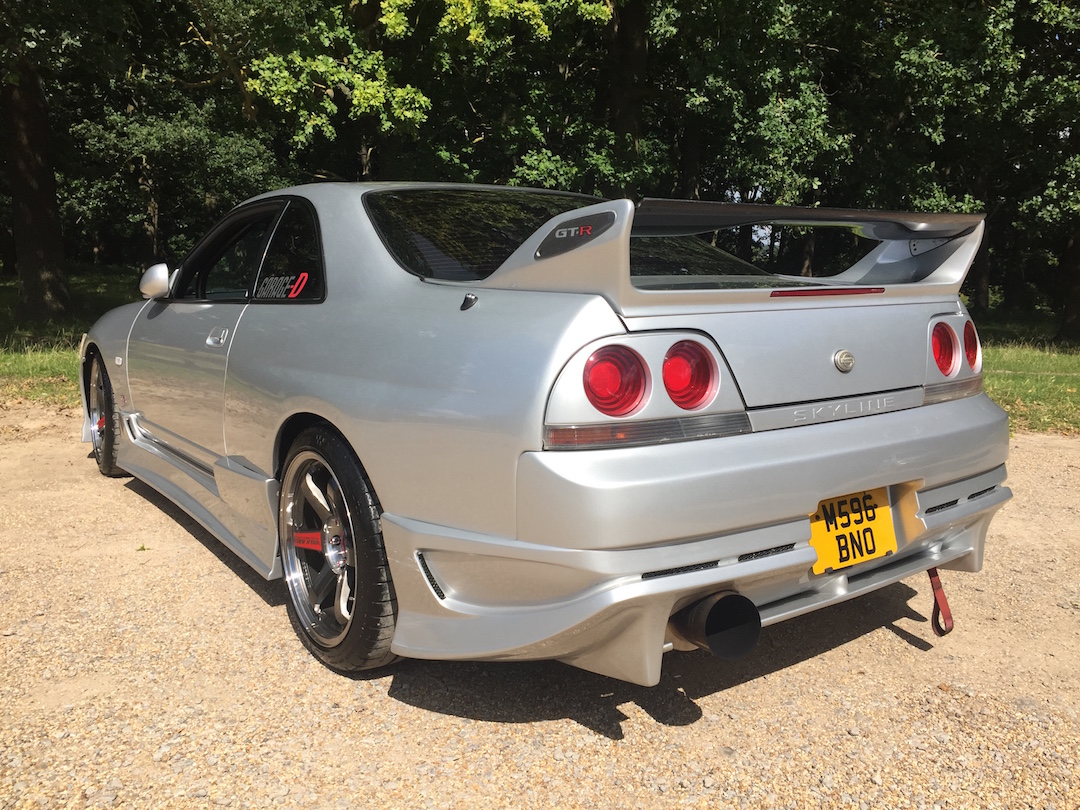"pics via RM If you appreciate automotive boxiness this Hakosuka Skyline will set your pulses racing. The 'Hakosuka' Skyline (loosely translated as 'boxy)' is the first edition of and the true forerunner of the legendary GT-R brand. Dating from "

It’s the Skyline for Nissan
It wasn't always Fast and Furious...
It’s safe to say that one of the best things to come from the land of the rising sun is the Nissan Skyline.
Those two words alone sum up performance at its finest, and to say the model is iconic is an understatement.
Despite models before the following also receiving the Skyline badge (note the S50, S54 and the stunning C10 and 2000GT-X) when we think ‘Skyline’ it’s the R31, R32 and R34 models that really resonate. That’s not just because I’m a fan of the Fast and Furious franchise. Oh no. It’s because this was when the real performance side of Nissan came true. The ultimate version of the R31 was the RB20DET-R-powered GTS-R coupe variant. Introduced in late 1987, just 823 examples of this model were built, featuring a larger turbocharger, a tubular steel exhaust manifold, and a larger front-mounted intercooler more than doubling output from 210bhp to 430bhp. Further highlighting what Nissan could do if they put their mind to it.

It was when the R32 came out, though, that the range attracted the Godzilla namesake. It was the R32’s success in the 1990 Australian Touring Car Championship that, the Australian motoring press donned the model as a “monster from Japan”.
The love for the Nissan Skyline spreads worldwide. And that’s not a surprise. With a history that dates back 60 years, it’s one of the few models that remain today. It may have seen a number of different guises, but these words attract an ever-loyal following.

The organisers of JapFest conducted a survey with its social media followers, just last year, as to what has been the best contribution in the automotive world from Japan and not-surprisingly voters went for the Nissan Skyline. The Toyota Supra got second position, while the Subaru Impreza WRX came in third. The organisers were quoted saying that it’s no surprise to see that’s it been named the most iconic Japanese performance car ever.
Off the back of this result, BBC’s Top Gear also conducted a poll on its website, which the majority vote was for the Nissan GT-R/Skyline. Beating off stiff competition from the likes of the Toyota Supra and Mazda RX-7.
It’s even been labelled by BBC’s Top Gear as the only true Japanese contribution in the line of supercars, with Jeremy Clarkson saying it was one of the best cars in the world.
The Japanese have always been known for their outlandishness – anyone who’s watched Takashi’s castle will know what I’m talking about straight away. Bordering on bizarre. And they’re the same with the car. Naturally, the Japanese car makers aren’t silly enough to go too lairy with its designs from factory, otherwise it’d limit its market to just, erm, Japan, probably… It has to be applauded, though, how far the Japanese go when modifying. People are naturally attached to their local car makers. Us Brits, for example, still love a British-built car. Even though we aren’t the best at it, we respect and value the remains of our heritage. The swedes are super proud of their Volvo heritage. The French love their Peugeots, Citroens and Renaults. The Americans love their big Chevys and V8s. It’s just the way it goes. And the Japanese are the same. They value the Toyota, Honda Nissan, Mitsubishi and Subaru brands. But us Brits also value those Japanese car makers, with more of us trying to find good examples to ship over. It’s not only the real-life car, either. If you grew up with Gran Turismo, you’ll know what we mean.

Japan consists of a number of subcultures surrounding modding cars. One culture to mention is the Bosozoku AKA ‘violent speed tribes’ – much like our car clubs in the UK, except these roll around in neon-soaked, sideways running boxes. Think the ‘Fast and Furious’ franchise.
While racing in Japan has seen a decline. The modifying culture has continued to grow. With the internet enabling everyone to share their pride and joys, the whole world has become truly privy to what the Japanese car scene has to offer. Where previous generations would read magazines for ideas and to see what trends were going on in the motoring world across the world, the internet has opened the scene to everyone. Not only that, developments in technology means that there are more aftermarket products than ever before. Some of which can often be classed as an improvement to what features on the car from factory.

Randomly, Japanese cars haven’t always been popular in the UK. The first ever Japanese car sold in Britain was, back in 1965. A Daihatsu Compagno was the first ever car imported to England. Selling… wait for it.. a total of SIX units in the five years it was on sale! It finally ceased production in 1970.
Despite a rocky start, though, Japanese cars are here to stay in the UK. Whether we follow suit and go as far as they do in Japan itself – Tokyo in particular – remains to be seen.
CLICK TO ENLARGE










